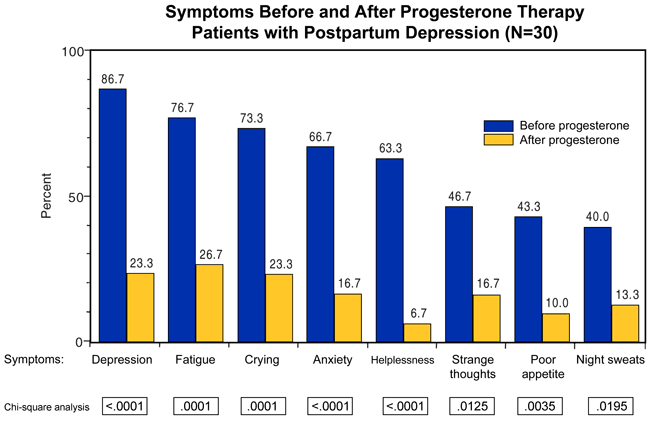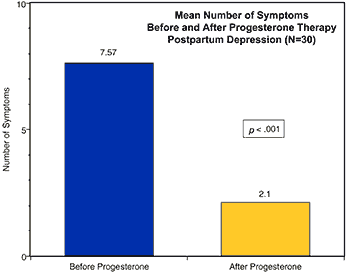The earliest documentation of postpartum mental illness was provided by Hippocrates in 400 B.C. In spite of its evaluation over the years, postpartum depression (PPD) has remained an enigma. Pregnancy, miscarriage or pregnancy loss, infertility, and the postpartum period challenge a woman’s mental health. Virtually no life event rivals the hormonal, psychological and social changes associated with pregnancy and childbirth. Because of depressive episodes, up to 32 percent of women may alter their future childbearing plans by resorting to either adoption, sterilization or abortion.
At some point in their lives, 20 percent of women will suffer from depression. Many seek treatment from primary care providers, but up to 50 percent may go unrecognized and more go untreated. Recognition and treatment of depressive disorders in pregnancy and during the postpartum period is critical for the healthy outcomes of both the mother and infant. Postpartum depression is identified as a major depressive disorder with postpartum onset. It is a major depressive episode that usually begins within the first four weeks following delivery. It can be extremely variable in both severity and duration. Symptoms include the following: fatigue, changes in appetite or sleep, dysphoric mood, loss of interest in usually pleasurable activities, psychomotor agitation or retaliation, recurrent thoughts of death/suicide, feelings of worthlessness or guilt (especially failure at motherhood), and excessive anxiety over the child’s health.
Postpartum psychosis is a more severe postpartum syndrome. Its onset is usually within the first three weeks following delivery and often within just a few days. Most episodes are related to a psychotic condition of bipolar disorder or major depression. The symptoms include delusion, hallucinations, rapid mood swings ranging from depression and irritability to euphoria, sleep disturbances and obsessive ruminations about the baby. The risk of suicide in postpartum psychosis is high (up to five percent) and up to four percent of women with postpartum psychosis may attempt infanticide.
Postpartum psychosis is a psychiatric emergency that often warrants hospitalization. The prognostic implications are different from postpartum depression. Nearly two-thirds of these patients will suffer subsequent non-puerperal psychotic episodes.
Postpartum mood disorders are common, with nearly 40 percent (or more) of women experiencing them. The risk of psychiatric hospitalization within the first three months postpartum is seven times more common than at other times in a woman’s life.Back to Top
Traditional Therapy
A traditional approach to therapy in this condition usually involves either psychotherapy or the use of antidepressant medications. In 1988, Dr. Katherina Dalton visited the Pope Paul VI Institute because of our interest in premenstrual syndrome. During the course of that visit, she commented on her long experience with the use of progesterone in the treatment of postpartum depression. In addition, she seemed to think that postpartum depression was a very common problem. In our own clinical experience, this condition has actually been very rare. The incidence of postpartum depression at the Pope Paul VI Institute is only 2.1 percent. At the time, we thought that because progesterone support during pregnancy in our high-risk pregnancy population was common, it may have had an impact on the overall incidence of postpartum depression in our patient population.
These discussions prompted an interest in the use of progesterone support for the treatment of postpartum depression. Studies were then undertaken to understand the role of progesterone therapy for women with PPD.
The use of progesterone for the treatment of postpartum depression symptoms can be very dramatic. In Figure 30-3, the effects of progesterone on the treatment of depression, fatigue, crying, anxiety, helplessness, strange thoughts, poor appetite and night sweats were all statistically highly significant when progesterone was used. In fact, the incidence of these symptoms decreased significantly.

In addition to the above, the average number of symptoms that a patient had relative to her postpartum depression were much higher before progesterone therapy than they were after. The number of symptoms experienced prior to progesterone therapy were 7.57 and this decreased, after progesterone therapy, to 2.1 (see Figure 30-5).

There are multiple advantages to the use of progesterone. First of all, it is rapid in onset. Within literally minutes or hours after the first injection of progesterone, many of the symptoms are lifted. Secondly, over 95 percent of patients will respond positively to a progesterone therapy. While progesterone therapy is not commonly used by obstetrician-gynecologists, this is mostly because of their lack of awareness of the effectiveness of progesterone in this situation. It is, bottom line, an incredibly effective treatment. It far exceeds the effectiveness of either psychotherapy or antidepressants and should be considered in the treatment of postpartum depression.
